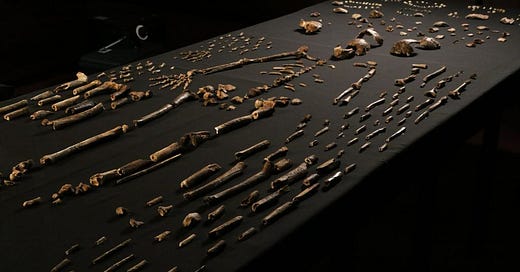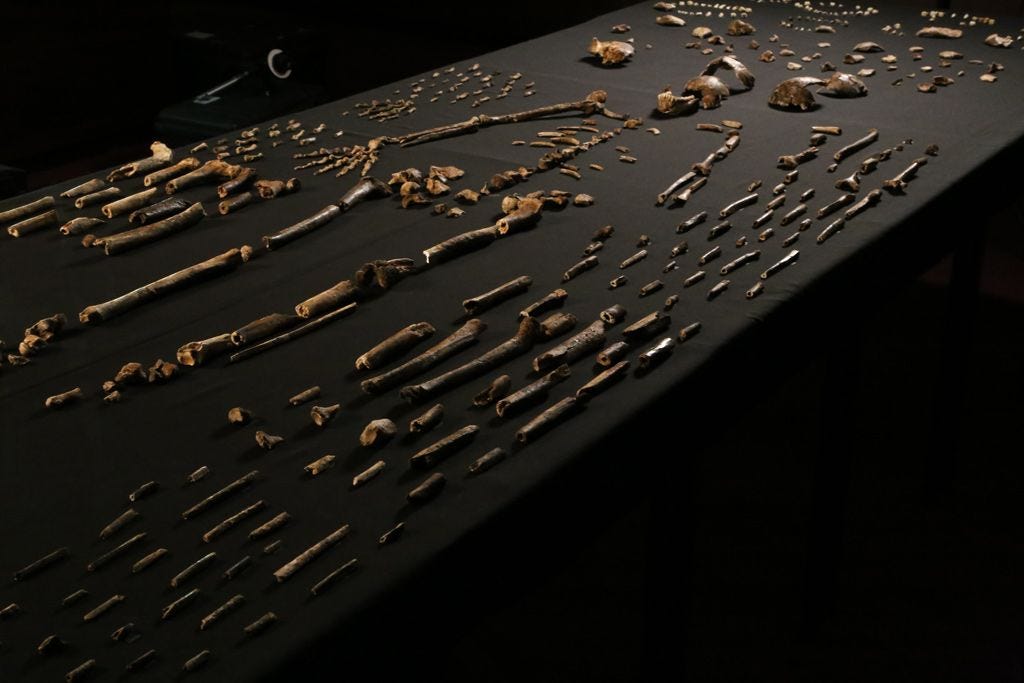Research highlight: The limbs of Homo naledi
In a new paper, Sarah Traynor, David Green and I show that the sizes of the arm bones of Homo naledi are more or less like today's humans, despite their many morphological adaptations to climbing.
Citation: Traynor, Sarah, David J. Green and John Hawks. 2022. The relative limb size of Homo naledi. Journal of Human Evolution 170:103235. https://doi.org/10.1016/j.jhevol.2022.103235
When we discovered Homo naledi, we found that it was different from today's humans in upper limb and shoulder features that seem well suited for climbing. The scapula of H. naledi is shaped with its glenoid fossa directed more superiorly, and the humerus has a head that is pointed more posteriorly compared to humans today. Both these features make the shoulder joint better suited for reaching upward and exerting force in front of the trunk. At the same time, the finger bones of H. naledi are strongly curved, suggesting that their flexor tendons were configured for gripping tightly around branches or onto rock surfaces.
It was hard for us to look at the relative length and sizes of the arms compared to the legs in this species. In our first sample of fossils from the Dinaledi Chamber, the bones of several individuals were commingled. This made it very hard to see whether any of the arm and leg elements came from the same individual. The usual ways of assessing the relative lengths of limbs, or sizes of limb joints, required taking the ratio of measurements from a single skeleton.
I'll add that, even though the Dinaledi sample represented at least 15 individuals, there were only a few limb bones complete enough to provide an accurate estimate of the bone's length. This situation is what we usually see in fossil samples, as most bones are fragmented into small pieces. For that reason, many scientists have compared the sizes of limb joints, such as the head of the humerus and head of the femur, instead of comparing the lengths of limb bones.
These measures give different kinds of information, and they are complementary across species of primates. Primates that use their arms to bear more of their weight in climbing or walking have larger joint surfaces for their arm bones, and larger cross-sectional areas of the arm bones. Primates that bear weight more on their legs have large leg joint surfaces and larger cross-sectional areas of their femora and tibiae. If you compare the arm and leg, humans have relatively small arm bones compared to our legs.
My colleague Sarah Traynor did her PhD work on the evolution of limb proportions in hominins, including H. naledi. For his previous work on Australopithecus afarensis, our coauthor David Green developed an innovative statistical approach to compare samples of unmatched upper and lower limb bones that come from many different individuals. We applied a similar approach to the Dinaledi sample.
We found that the sizes of the arm bones of Homo naledi are proportioned to the leg bones in the same way as in today's humans. In other words, H. naledi had humanlike size proportions of its limbs.
Our results suggest that H. naledi was similar to modern humans in being lower limb dominant, implying they engaged in fewer locomotor behaviors that required significant loading of the upper limb. This affirms that bipedality was likely the most significant mode of locomotion in H. naledi and is in agreement with previous studies of lower extremity elements.
That's interesting in light of the clear morphological differences between H. naledi and humans in the shoulder, humerus, and hands. This seems to be a species that did not exhibit a trade-off between climbing and walking or running bipedally.




